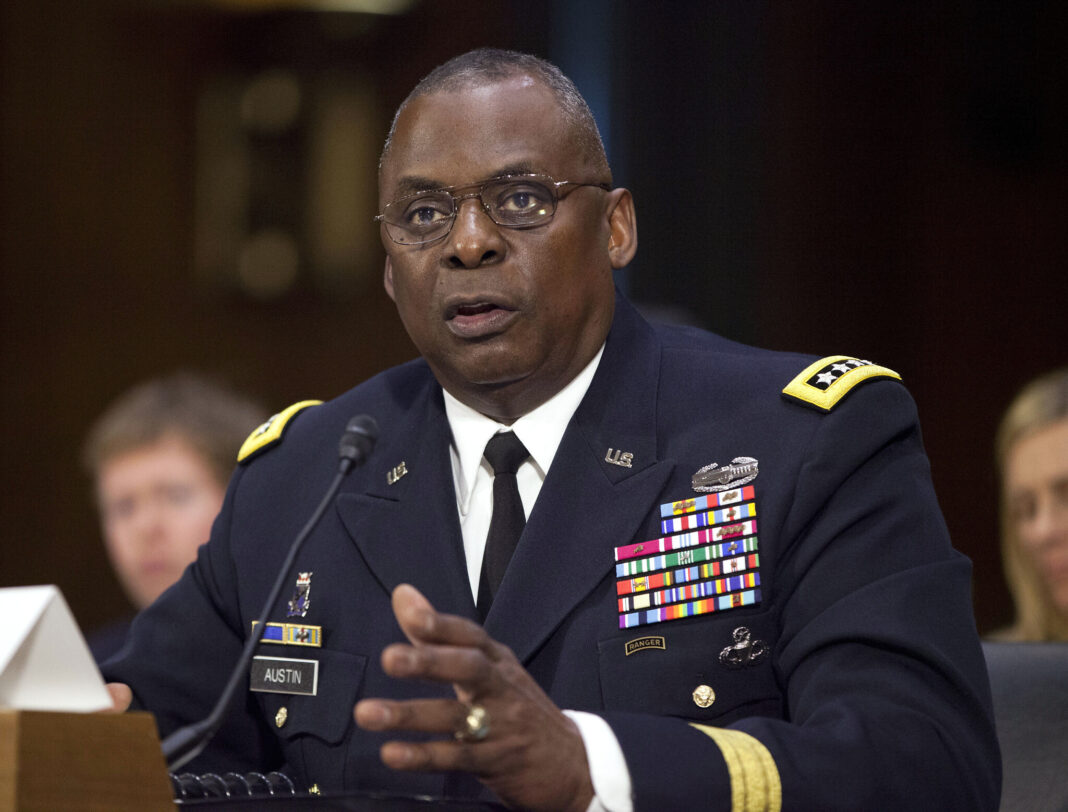The retired four-star Army general would make history as the first African-American to lead the Pentagon.
President-elect Joseph R. Biden Jr. is expected to nominate retired Gen. Lloyd J. Austin III, a former commander of the American military effort in Iraq, to be the next secretary of defense, according to e report by the New York Times.
If confirmed by the Senate, General Austin would make history as the first African-American to lead the country’s 1.3 million active-duty troops and the enormous bureaucracy that backs them up.
General Austin, 67, was for years a formidable figure at the Pentagon, and is the only African-American to have headed U.S. Central Command, the military’s marquee combat command, with responsibility for Iraq, Afghanistan, Yemen, Syria — most of the places where the United States is at war.
General Austin is known as a battlefield commander. But he is less known for his political instincts — and has sometimes stumbled in congressional hearings, including a session in 2015 when he acknowledged, under testy questioning, that the Defense Department’s $500 million program to raise an army of Syrian fighters had gone nowhere.
He was selected over another front-runner, Michèle A. Flournoy, who had served in senior Pentagon policy jobs and mentored a generation of women in national security who had pushed for her appointment as the first female defense secretary.
Mr. Biden, who is meeting with N.A.A.C.P. leaders Tuesday, was facing pressure from the Congressional Black Caucus and other Black officials to name an African-American to run the Defense Department or Justice Department. But he also skipped over Jeh C. Johnson, a former secretary of homeland security and former general counsel at the Pentagon considered by many to be a more politically astute pick for the first Black man to head the Defense Department.
It was unclear Monday night what tipped the scales for General Austin. People close to the transition noted that, during the Obama presidency, Mr. Biden was unhappy with the high profile of the Pentagon, with generals like David H. Petraeus gaining near rock-star status, and the belief that the Pentagon rolled President Barack Obama into increasing troop numbers in Afghanistan.
General Austin’s lower profile, those people suggested, may match with Mr. Biden’s hopes for a more muted Defense Department.
Still, General Austin may face some pushback from lawmakers who feel strongly about civilian control of the military, and do not think a retired general can make the transition. Like Jim Mattis, who was President Trump’s first defense secretary, General Austin would have to get a congressional waiver to serve, since he has been out of the military for only four years and American law requires a seven-year waiting period between active duty and becoming Pentagon chief.
It is not assured that General Austin would get the waiver; Senator Jack Reed of Rhode Island, the top Democrat on the Armed Services Committee, had indicated after Mr. Mattis’s confirmation that he would oppose future waivers for the post. But for Mr. Reed to reject the first African-American nominated to be defense secretary, after approving Mr. Mattis, would be notable.
General Austin, who retired as a four-star general in 2016 after 41 years in the military, is respected across the Army, especially among African-American officers and enlisted soldiers, as one of the rare Black men to crack the glass ceiling that has kept the upper ranks of the military largely the domain of white men.
Some 43 per cent of active-duty troops are people of colour. But the people making crucial decisions are almost entirely white and male.
Supporters say General Austin broke through that barrier thanks to his experience, intellect and the mentorship of a former chairman of the Joint Chiefs of Staff, Adm. Mike Mullen, who plucked him to direct the staff of the Joint Chiefs’ office.
After that, General Austin continued to rise in the ranks. He was named commander of Central Command by President Barack Obama in 2013.
Shortly after the 2020 election, General Austin took part in an online session that Mr Biden had with former national security officials. During that meeting, General Austin impressed Mr Biden, aides said.
After retiring, General Austin joined the board of the defence contractor Raytheon Technologies, a fact that garnered criticism Monday night.
But his supporters point to a long career in combat and command, including some of the most difficult assignments of the post-9/11 era.
General Austin became the top commander of American forces in Iraq in 2010, when the United States still had roughly 50,000 service members there. Much of the attention had moved on to other hot spots in the Middle East, but major questions still existed about the direction of Iraq, including whether any American forces would remain in the country beyond 2011.
General Austin and his commanders were convinced that a sizable force of over 5,000 troops needed to remain to help the fledgeling Iraqi military. But the commanders on the ground were ultimately overruled by the Obama administration, which pulled out all American forces by the end of 2011.
Years later that decision would be blamed for the Islamic State’s ability to seize wide swaths of the country.
General Austin’s style was far more reserved than some of the officers with marquee names who spent considerable time cultivating their public image and using the news media to maneuver policy fights with the administration.
Despite overseeing the withdrawal of American forces from Iraq after a bloody war, General Austin showed little interest in the public-facing parts of the job. He avoided speaking publicly or with members of the news media, allowing others to take the lead in the messaging as the war came to an end.
Subsequently, as commander of all American forces in the Middle East, General Austin was the principal military architect of the U.S.-led campaign to oust the Islamic State, after the insurgents seized a swath of territory in eastern Syria and northern Iraq the size of Britain, in June 2014.
After first spending several months helping beleaguered Iraqi forces shore up defensive positions outside the Iraqi capital, Baghdad, the United States halted the Islamic State advance elsewhere in the country’s northern third with a campaign of airstrikes to weaken and damage the insurgent ranks.
By the fall of 2015, under General Austin’s leadership, the American-led coalition began preparing a major front in northeastern Syria, aiming to put pressure on Raqqa, the terrorist group’s de facto capital.
Under a war plan drafted by General Austin and his aides, and approved by Mr. Obama, the Pentagon took two major steps. The military, for the first time, directly provided ammunition and some weapons to Syrian opposition forces fighting the Islamic State on the ground. Mr. Obama also endorsed General Austin’s idea for an increased air campaign from Incirlik Air Base in Turkey.
Together, these measures were intended to empower 3,000 to 5,000 Arab fighters who would join more than 20,000 Kurdish combatants in an offensive backed by dozens of coalition warplanes to pressure Raqqa.
This new northern front aimed at weakening the Islamic State by trying to take away the group’s home-field advantage, even as the militants held on to Mosul and Ramadi in Iraq.
In testimony in September 2015 to the Senate Armed Services Committee, General Austin said that over the next six months it would put “a lot more pressure on key areas in Syria, like the city of Raqqa.”
“Because of that access,” General Austin continued, referring to the use of the air base in Turkey, “we’ll have the ability to increase the pace and focus on key places in Syria. So that will certainly shake things in Iraq.”
And over time, General Austin’s strategy did exactly that.
General Austin is a graduate of the United States Military Academy. He and his wife, Charlene, have been married for 40 years.
His elevation would be particularly poignant for Black West Point graduates: He was reared in Thomasville, Ga., the same town that produced Henry O. Flipper, who was born a slave and in 1877 became the first African-American graduate of the academy.
Do you have a story for Fedredsnews?
Email us at info@fedreds.com or send a WhatsApp message to 08083064630
Twitter: @FedredsNews




